Inside Tracks #33: "Everlasting Love" by Buzz Cason & Mac Gayden: Robert Knight, w/Covers by Love Affair, Carl Carlton, David Ruffin, U2, Rex Smith & Rachel Sweet & more
It's been malleable enough to be country, soul, pop, and even rock. Who are Cason & Gayden, and what was it about their exhilarating celebration of amour beyond tonight that prompted 6 dozen covers?
A 5-year-old began composing “Everlasting Love” in 1946. While watching a singer perform in college, he was inspired to complete the song he started in kindergarten, and offered the song to that singer.
Like most songs that are fortunate to have covers recorded by many, some were hits, and some were misses. Here’s one of the song’s two composers performing it in 2013:
“Everlasting Love” (first recorded in 1967) has been no different: With 73 covers, it’s one of only 2 songs to have entered the Billboard Hot 100’s Top 40 in the 1960s, 1970s, 1980s, and 1990s, and is the only song to have become a UK Top 40 hit in the 1960s, 1970s, 1980s, 1990s, and 2000s, reaching the Top 20 in every decade except the 1980s.
Meet the Songwriters
Buzz Cason
James E. “Buzz” Cason was born in Nashville in 1939. A Rockabilly Music Hall of Fame Member from his 1950s work with The Casuals (Nashville’s first rock’n’roll band) who became the backing band for Brenda Lee, and toured with Jerry Lee Lewis and other greats, Buzz has written hits for Jan and Dean and others in the ‘60s.
He then formed Creative Workshop Recording Studio in Nashville, where he helped start and co-write the songs on Jimmy Buffett’s first two albums. He also recorded hits at the Creative Workshop for Dolly Parton, the Oak Ridge Boys, Roy Orbison, Leon Russell, Merle Haggard, the Doobie Brothers, The Faces, and Elvis.
He has contributed vocal session work for Elvis, Kenny Rogers, Kris Kristofferson, Ronnie Hawkins, Roy Orbison, Mickey Newbury, Levon Helm, John Denver and he was the voice of Alvin on several Chipmunks records.—BackstorySong.com
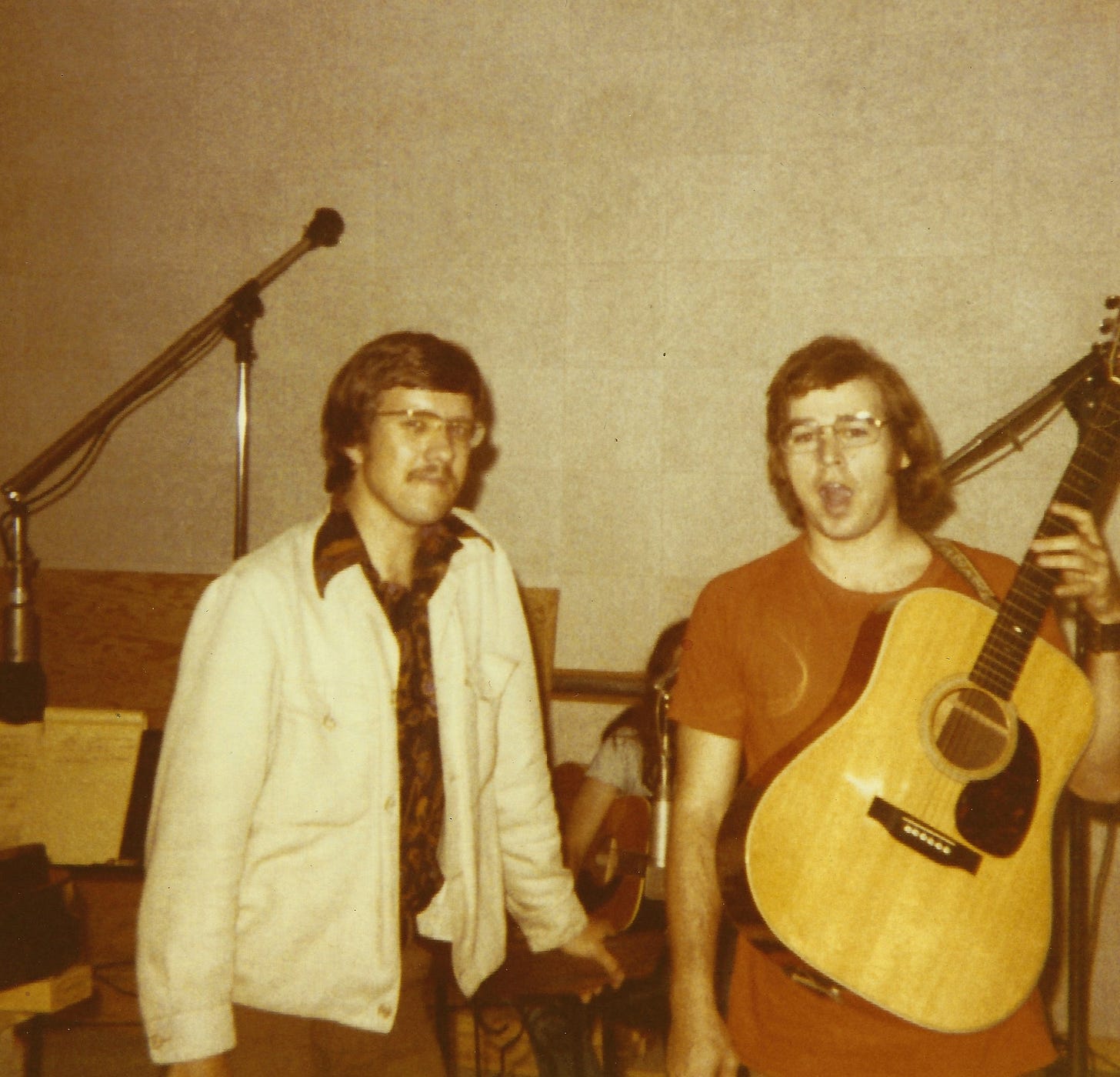
A 2017 interview with Cason at his Nashville home:
Cason’s 1962 song, “Soldier of Love,” a co-write with Tony Moon, was covered in 1963 by The Beatles, Live at the BBC (album released in 1994), as well as recorded by Marshall Crenshaw on his 1982 debut album, and Pearl Jam and Little Steven.
Mac Gayden
Mac Gayden, born in 1941, is also a Nashville native. He played with Charlie McCoy and the Escorts, who started playing sessions in Nashville. In the late 1960s, he helped establish two critically acclaimed bands, including Barefoot Jerry (with an album on Capitol Records, 1971), in which Gayden wrote the songs, played guitars and sang.
Gayden left Barefoot Jerry in 1971 to record his first solo album with Bob Johnston, with whom he had worked on Bob Dylan’s Blonde on Blonde. Gayden has recorded as a session guitar player with JJ Cale, John Hiatt, Bob Dylan, Linda Ronstadt, Simon and Garfunkel, Kris Kristofferson, Rita Coolidge, Joe Simon, Elvis Presley, Ian and Sylvia, Jerry Jeff Walker, Loudon Wainwright, The Alarm, Pearls Before Swine, Ivory Joe Hunter, and others.
Gayden covers his and Cason’s song, 1976, on his ABC Records Skyboat album:
Begin the Parade o’ Covers!
According to his Wikipedia page, when Gayden was five, he started to compose a song on his grandmother’s piano. Later, when he heard Robert Knight’s voice while he was performing at a fraternity house at Vanderbilt next to the one Knight’s band was playing in, he ran over, introduced himself, and told Knight he had a song for him.
Gayden got together with Knight and began pulling in the pieces of the song. He also brought in his friend, Buzz Cason. He and Cason produced and arranged Knight’s original “Everlasting Love” in June 1967:
It made the Top 20 on the Billboard Hot 100 in 1967, and the song became a #1 hit in the UK in January 1968 when covered by the London-based Love Affair. In fact, as soon as Knight recorded his version, the race was on!
Knight’s single had made it to the UK (with its release imminent there), and Love Affair was keen to tackle it with their 17-year-old lead singer, Steve Ellis (shown below)….with a 40-piece orchestra (and a 20-year-old Kiki Dee in the chorus) backing him…in 2 takes, no overdubs!
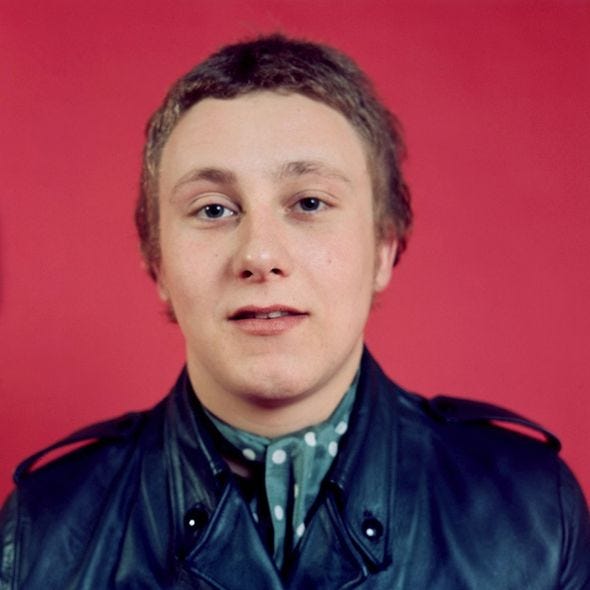
From his UK POV, Fil of the Wings of Pegasus YouTube channel has the full story of the Love Affair cover (including playing the song video, and analyzing Steve’s vocals):
Australia’s Town Criers (above) followed, minutes later, with theirs (as a five-piece….YouTube TV performance video here). Released in February 1968, it reached #17 on the Go-Set (weekly Aussie pop music newspaper) National Top 40 alongside Love Affair’s rendition which peaked at #23 on the same chart at the same time.
Knight’s version was reissued in the UK in 1974 and reached #19.
Ruffin Ready
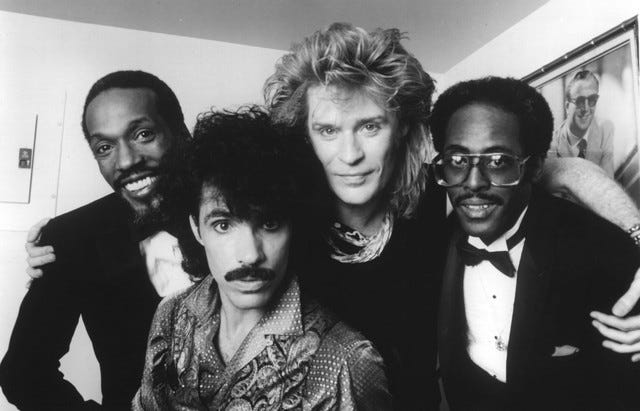
In October 1968, David Ruffin filed suit against Motown Records, seeking a release from the label and The Temptations over an accounting issue. Motown counter-sued to keep the singer from leaving the label and eventually the case was settled.
According to Mark Ribowsky in his 2010 Ain’t Too Proud to Beg: The Troubled Lives and Enduring Soul of the Temptations, the settlement required Ruffin to remain with Motown to finish out his initial contract (Ruffin joined Motown as a solo artist and always had a separate contract from the other Temptations, which some felt caused a lot of the in-fighting within the group).
Ruffin’s “Everlasting Love” was released in May 1969.
We’ll be right back, after this brief word from Grolsch Premium Lager (ft. Kerry Norton):
The First One You May Have Heard
The first cover you may have heard was the #6 hit by Carl Carlton on ABC Records in 1974. It’s the first one I heard, and I really enjoyed hearing it coming out of the car radio. Produced by Papa Don Schroeder and Tommy Cogbill (who also played bass on the song), notable session players were present, including singer/songwriter, Brenda Russell (“Piano in the Dark,” 1988), on backing vocals. Distinctive strings and horns were arranged by Jimmie Haskell, with Sid Sharp, concertmaster.
Carlton, in a live performance for PBS, 2002:
Rex’n’Rachel, Missing MTV by Mere Weeks
Possibly the song’s first introduction to a new, younger generation (certainly the disco-into-video generation), Rex Smith and Rachel Sweet produced the first, and what appears to be the only, face-to-face duet of the song’s lifespan. Released on Columbia Records in June ‘81, it missed MTV’s August 1 debut by about 6 weeks!
Which, of course, didn’t prevent CBS from producing a classic early-era excessively literal and fairly pedestrian video: Smith’n’Sweet gather at a church for their wedding, and the song serves as their eternal vows to each other:
This recording, produced by 5-time Grammy-nominated Rick Chertoff (assisted by Grammy-winning engineer William Wittman, whose production credits include Patty Smyth, Cyndi Lauper, and The Outfield) also features a string arrangement by veteran of the disco wars, Bert DeCoteaux, with the rhythm arrangement ably handled by David Wolfert (with an assist from Chertoff).
This convention of talented musicians brought about (at least) 3 significant arrangement ideas which A) were likely the first for this song, ever, and B) influenced a few arrangements going forward. The first is the rock-forward barre chord punctuations throughout. Four guitarists were on the sessions, and it’s hard to discern precisely which one provided that ingredient.
Second, the tubular bell which announces (heck, forces) the modulation. By the way, in performances (you can see it below), Rex came up with the signature move, at just that moment, of punching the air (at gut-level) at the sound of the bell! Percussionist on the session was the late Leonard “Doc” Gibbs, Jr. (he’s also responsible for the delicate triangle playing against the staccato guitar opening)! Third, of course, was that very modulation.
These three things, debatably, propelled this song perhaps as close to its pinnacle as the songwriters could’ve imagined (or dared hope). This arrangement certainly incorporated elements that elevated the “everlasting” quality of the Cason/Gayden composition. From my perch, and for 1981, this is about as perfect an example of pure pop songcraft as the decade (and these principals) produced.
Now, this treat, from a mid-1982 Solid Gold telecast, features Rex duetting with former 5th Dimension songstress, Marilyn McCoo (both were presenters on the show).
Taped at Gene Autry’s Golden West Broadcasters Hollywood studios (home of independent KTLA-TV), vocals are live, of course, and the show’s Musical Director, Michael Miller, recorded the backing track with the Solid Gold Band, and had it playing behind Rex and Marilyn’s vocals. But first, the requisite variety-show inane patter, perfectly timed, as the song’s intro plays underneath:
These buttons will A) take you to all the previous Audio Autopsy operations, as well as B) a way for you to share all the FRONT ROW & BACKSTAGE goodies with friends and colleagues! 👇 👇 👇 👇
Wild Horses Bust Out of the Corral, 1981
They must have heard me (or Rex’n’Rachel’s arrangement). Same month, June 1981, and Wild Horses cranks it up to 11. As hard rock as this thing ever got, my only “complaint” is that they halt the proceedings at the first chorus just as they had just begun to gallop! Regardless, they hit the tape at just under the 2 1/2-minute mark!
From 1978 to 1981, the Wild Horses duo was ex-Thin Lizzy guitarist, Brian Robertson, and ex-Blackmore’s Rainbow bassist, Jimmy Bain. With those pedigrees, it had to rock! Never an album track (until a 2013 compilation CD), it was only a 1981 single:
Following are links to just a few of the covers that followed, in chronological order. Peruse at your leisure (Sp = Spotify; YT = YouTube):
Vickie Sue Robinson, 1983, extended Disco version (6:30), YT
The Truth (UK), 1984, Live, YT
Sandra (Germany), 1987, TV performance video (notable for dual standing syn-drummers), YT
U2, 1989, UK and Europe only, Island Records
Songfacts: U2 released their cover of this song on their “All I Want Is You” single in 1989 (apparently worldwide, except U.S.). When Songfacts spoke with Buzz Cason in 2015, he said: “We still don’t know why U2 did ‘Everlasting Love.’ It was a very big song in England; a bigger song in England than it was in the States. It was a #1 record by Love Affair in England, so everybody knew it. So, I kind of assumed that it was the same in Ireland where Bono and all those guys were and they just decided one night, ‘Hey, let’s throw this thing together.’
“They don’t even do the lyrics right on it [Laughs]. But, I raced cars for years and one of my mechanics called me and said, ‘Hey, listen to what’s in the background. That’s U2 singing your song.’ I was like, ‘Oh no, man, that’s got to be somebody else. That can’t be.’ It was just surreal!”
David Essex (UK), 1993 recorded cover, but this is a 2008 TV performance, YT.
Worlds Apart (UK), 1994, synched TV performance, YT
Gloria Estefan, 1995, TV performance, YT
Jamie Cullum (UK), 2004, official music video, YT
The Soldiers (UK, serving British Army trio), 2010, audio, YT

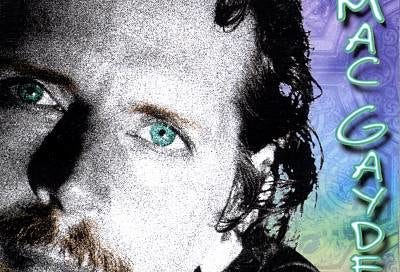




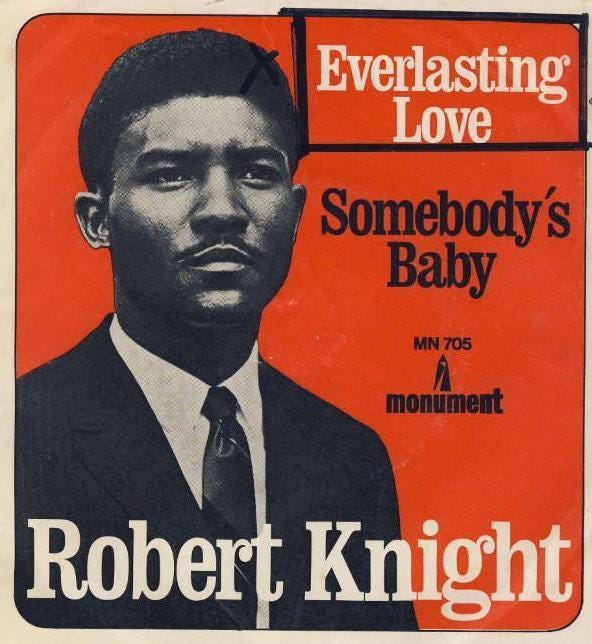
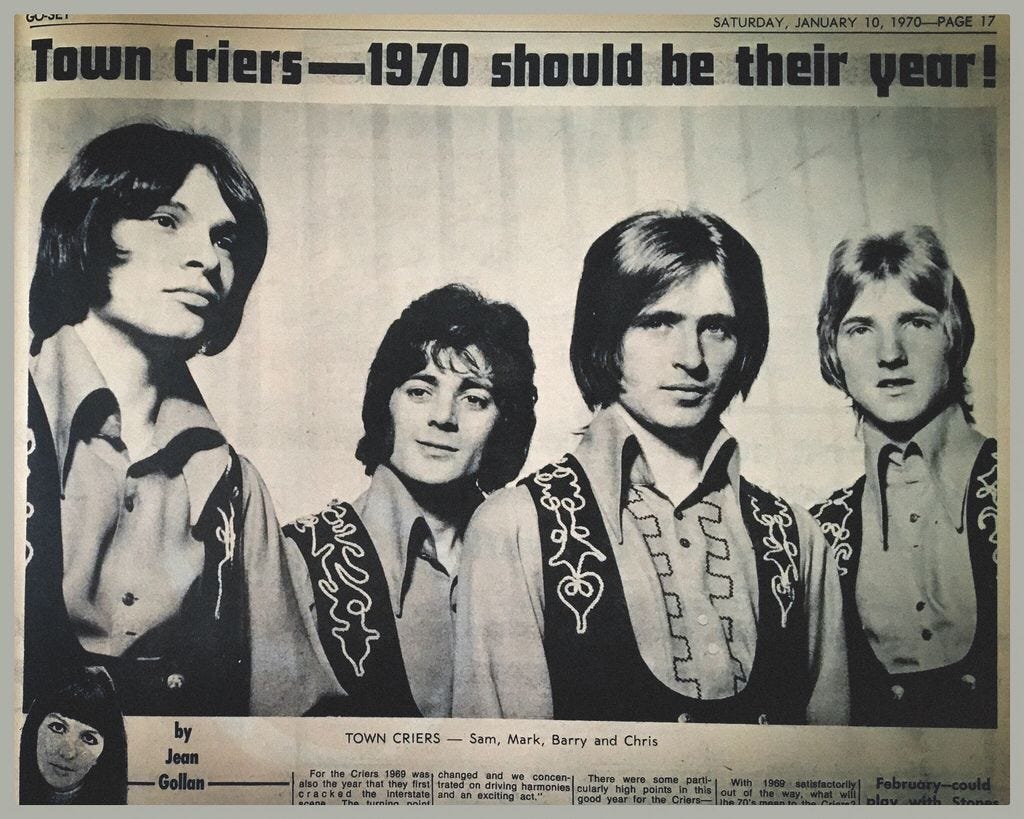



Getting onto this quite late, with apologies, as I didn’t know this song (I guess this is one of the many reasons we come here, right? 😉).
On a first listen, what first comes to mind — and I cannot think of anything else — is how timeless the song is. I had to check to make sure I was reading correctly: 1967?! It’s very interesting that, at least to me, there is nothing in the song structure or overall vibe that would give me any definitive clue about the era it originated from. And I know “timeless” is a word that gets used and overused and gets a bit tired, and yet I can’t help but comment on this: how truly timeless it feels. For me as a soul fan, 1967 is a year I will automatically associate with Aretha Franklin, particularly her career-defining album “I Never Loved a Man…”. Many have said that record is timeless as well, and while I don’t disagree, I feel that some records, perhaps on purpose, do give clues about the time they were conceived, and sometimes that’s what makes them successful. It happens a lot with soul and R&B (else the whole “retro soul” movement wouldn’t be what it is, because there is a certain type of song that will need time clues to make it what it is). I guess all this rambling is simply to say that I find it really interesting how songwriters and artists can play with “time clues”, sometimes hiding them, sometimes deliberately introducing them, both valid strategies or approaches, to give a song a certain feel.
“…it’s one of only 2 songs to have…”
What’s the other one? Or is that a future “Inside Tracks”?